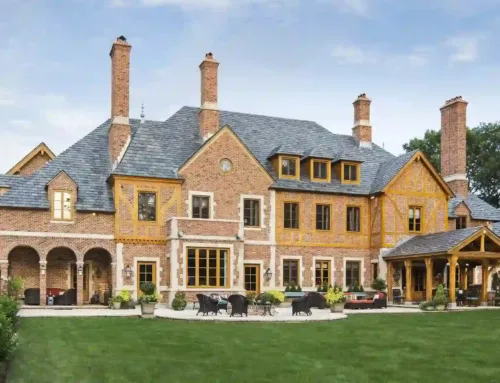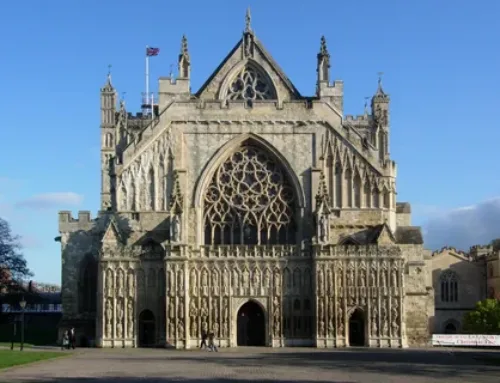How to Use Plants for More Realistic Architectural Visualizations
Architectural visualizations have brought a huge shift in the representation of design concepts. Rather than depending on sketches or blueprints, designers and architects now use 3D renderings to create immersive presentations that are exactly life-like. Plants are one of the key factors to achieving photorealism in the conceptualizations. However, plants give life, texture, and depth to renderings, thus grounding the design in nature.
So, in this blog, we will discuss the efficacious use of plants for rendering projects in architectural visualizations. Let’s first discuss why plants are important for spot-on visualization.
LOOKING TO IMPROVE YOUR ARCHITECTURAL VISUALIZATIONS? START EXPERIMENTING WITH PLANTS FOR RENDERINGS TODAY AND SEE HOW THEY CAN ENHANCE YOUR DESIGNS!
Why Are Plants Crucial for Realistic Architectural Visualizations?
Creating credible 3D renderings consists of more than just wall and furniture modeling. Without vegetation, your rendering is likely going to look sterile and flat. They inject warmth, life, and a sense of scale into the scenarios!
Plus, whether you are developing a 3D render interior design or the 3D view of the outside look of a house, the plants help to balance the composition and soften the harsh lines. Proper placement helps to stimulate natural growth on the plane, interaction of light, and casts shadows to enhance realism.
The Importance of Choosing the Right Plants
Every space cannot accommodate all the plants universally. Moreover, the plant’s choices must align with common indoors such as succulents, ferns, and peace lilies. This type of low-maintenance plant brings elegance without overcrowding the design.
You can also consider trees, shrubs, or flowering plants according to the local climate. Moreover, the use of local flora in rendering adds authenticity and helps the building blend with the environment.
Now, let’s discuss the Top 10 3D Plant Models for Interior and Exterior Renders
Top 10 3D Plant Models for Interior and Exterior Renders
To create impactful visuals, use high-quality plant models. Here are ten excellent choices for your 3D design product:
- Ficus Lyrata (Fidel Leaf Fig): A stylish favorite in modern interiors.
- Monstera Deliciosa (Swiss Paneer Plant): The Tropical Nature and Visual Drama adds.
- Snake Plant: Ideal for strong and elegant, minimal interiors.
- Palm Tree: Great for outdoor scenes from tropical or resort style.
- Cactus: Trendy and versatile for outsiders with indoor or desert themes.
- Bamboo: Perfect for Zen or Japanese-induced places.
- Pothos: A cascading vine suitable for shelves or walls.
- Aloe Vera: Simple and clean for minimal interiors.
- Lavender: Fragrance and color add to any stage.
- Oak tree: Ideal for large, realistic outdoor scenes.
These models enrich your rendering and enhance the realism of your 3D design.
How to Integrate Plants Seamlessly into Your Visualizations
Once you’ve chosen the right Indoor Plants for 3D Renderings, the next step is seamless integration. Here are a few essential tips:
1. Pay Attention to Scale
A common mistake in plant visualization is that you do not focus on scale. So, make sure the plant size matches the scale of the room or outdoor area.
2. Use Layers and Depth
Create a perspective using plant materials. However, for outdoor 3D visualizations, a realistic arrangement would put them into natural clusters as found in actual environments.
3. Experiment with Lighting
Lighting makes or breaks realism. Plants interact with light in unique ways, casting soft or sharp shadows depending on conditions. For interior 3D rendering, use diffused lighting to replicate soft sunlight. Plus, for 3D rendering of house exterior, brighter, directional light enhances realism and texture.
4. Pay Attention to Textures
Keep in mind that detailed textures are critical. From fine veins in leaves to the coarse surface of tree bark, good textures make plants appear lifelike. Invest in high-resolution maps for leaves, stems, and trunks to avoid the flat, synthetic look.
5. Don’t Overcrowd the Scene
It’s tempting to add many plants, but too many can clutter your design. Use them purposefully. Choose a few key pieces that enhance the space while still allowing your architecture to stand out.
6. Use Realistic Animations
For exterior renders, subtle animations can breathe life into your scenes. Trees that sway in the breeze or grass that ripples slightly add an immersive, cinematic feel. This small touch can elevate a static 3D design into an engaging experience.
REACH OUT NOW TO OUR EXPERIENCED VISUALIZERS AND GET REALISTIC 3D RENDERINGS TO STAND OUT IN THE ARCHITECTURAL INDUSTRY!
Conclusion
Plants have always been an effective yet very simple means to enhance architectural visualization. Indoor plants within the interior design rendering would just be a few elegant 3D models, or you can bring trees and other forms of nature in greenery for lushness in a 3D rendering of house exterior spaces. It can move the renderings from flat designs into vibrant, inviting spaces. In short, The 3D design product shall look stunning yet also feel alive. An important truth to keep in mind is that the 3D rendering itself should not be simply an image of the space, but should evoke a feeling of already being within it.





